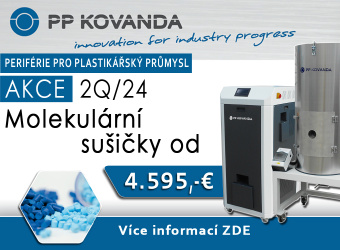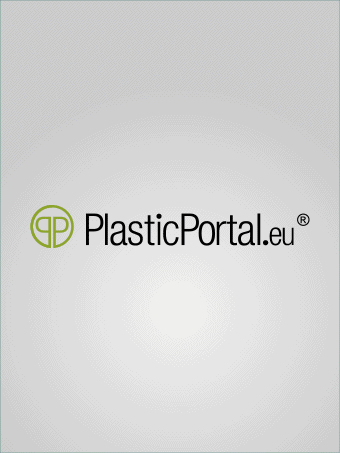Radiation Crosslinking – way to improve the properties of polymers, Part 1
eBeam-treatment is a versatile and efficient method to improve the performance of polymers used in various technical applications. The cable industry utilizes this technology since many years to improve the performance of cable insulations. Chemical processes induced by ionizing radiation can be quite complex, as several competing chemical reactions such as crosslinking, chain scission, oxidation, grafting, etc. occur. The most beneficial reaction by exposure to radiation is crosslinking. The objective of this paper is to describe the effect of different doses of accelerated electrons on changes of mechanical, thermal and chemical properties of commercially available types of polymers with relevance for the manufacture of wires and cables and other applications.
The significant changes in mechanical properties are represented by tensile properties of investigated specimens at different temperatures and by their creep behavior. Selected mechanical properties were compared also with non-irradiated material. The changes in the thermal resistance are represented by TMA measurement and by visual observation after two hours exposition at 220°C in the thermal chamber. Measured data are supplemented with the quantity of formed gel content in the structure of the investigated polymers. The changes in the chemical resistance are represented by swelling in the solvent xylene.
1. Introduction
Interactions of ionizing radiation with polymers induce many competing reactions. The primary interactions of ionizing radiation with polymers include ionization, excitation, free radical formation, and other. The secondary reactions following the free radical generation include hydrogen abstraction, addition to double bond, recombination (crosslinking or branching), chain scission, oxidation and grafting.
From a practical point of view, the most important and beneficial reaction is radiation crosslinking (the formation of cross-links, i.e. the formation of intermolecular bonds). Crosslinking is a chemical process leads to a formation of a three-dimensional network structure. Radiation crosslinking is a result of recombination of migrating free polymer radicals predominantly in the amorphous regions (Figure 1). The critical condition for radiation crosslinking is the generation of secondary radicals in the amorphous region at the rubbery state and the mobility of polymer chains carrying secondary radicals.
 |
Figure 1. Radiation-induced formation of cross-links in polyethylene (I – crystalline regions, II – amorphous regions) |
Usually, crosslinking and main-chain scission are two competing processes that always occur simultaneously under radiation. If the ratio of the formation of cross-links to the scission of chains is greater than two, crosslinking takes place.
These structural changes lead to a significant increase in molecular mass, reduced solubility in organic solvents and improved mechanical, thermal as well as chemical properties, which allows the use of lower-cost commodities or technical polymers instead of costly high-performance polymers.
The result of the treatment is influenced by many possible factors that need to be considered to obtain a favorable result.
The main reason for crosslinking the insulating polymer for wires and cables is to enhance its performance at elevated temperature under load. In addition, crosslinking substantially improves the chemical resistance, toughness, abrasion resistance, environmental stress crack resistance (ESCR) and resistance to slow crack growth. This for example allows to reduce the conductor diameter and the thickness of the insulating material of the wire, which is a very beneficial advantage for applications in automotive and public transportation applications.
Typically, cables are treated in an irradiation facility in a continuous process, which requires an unwinding/winding step and feeding the product through a radiation chamber, where it is exposed to the accelerated electrons. A typical electron beam-processing facility consists of the electron accelerator, material handling equipment, radiation shielding, ozone exhaust and a control system. For crosslinking of wires and cables are commonly used different types of EB accelerators with different energy from medium (0.3 - 5 MeV) to high energy (5 - 10 MeV) accelerators depending of required penetration of accelerated electrons in irradiated materials. The penetration capacity of accelerated electrons mainly depends on the acceleration energy and the density of irradiated product (Figure 2).
The process parameters to control properties of polymers, is at a given chemical structure of the polymer directly correlated to the dose absorbed, which is a function of transport speed of the wire and electrical output of the eBeam unit. This makes the process very reliable, as all the key parameters are electrical units, which can be controlled easily. The absorbed dose is the amount of energy of ionizing radiation absorbed by a unit of mass of the processed material. The unit of absorbed dose is 1 Gray (1 Gy = 1J/kg).
 |
Figure 2. Electron rays principle, 1 – Penetration depth of electron, 2 – Primary electrons, 3 – Secondary electrons, 4 – Irradiated material |
The benefit of treating thermoplastic materials by eBeam is that commodity polymers and engineering polymers can be upgraded in their physical and chemical properties to a level, which in many cases would require much more costly high performance materials or which allows new application areas for the existing materials (Figure 3).
As the crosslinking reaction takes place almost instantaneously, very high production speeds of many hundred meters/min are possible with modern high-output eBeam units, so that the process can compete easily with chemical methods.
The radiation dose has a direct influence on the economics of the process and is strongly depending on the choice of the polymer and the composition of the cable compound. It needs also careful consideration that some polymers will degrade and deteriorate by radiation treatment. Thusly, the best results are obtained, when the choice of the method of crosslinking is already considered in the early design stage of a product starting with the material selection.
Radiation cross-linked wire and cable insulations exhibit excellent properties. They will not melt and flow at elevated temperatures, e.g. if the conductor becomes overheated due to a shorted electrical circuit or during the soldering operation. The heat-resistance temperature (HRT) is significantly improved through radiation crosslinking. The HRT of non-cross-linked PE can be upgraded from 80°C up to 125°C, e.g.
Typical applications of radiation cross-linked wires and cables in an automobile are e.g. near the engine or the exhaust line.
 |
| Figure 3. Pyramid of polymers |
Radiation cross-linked PVC and PE insulations for thin-wall, low-voltage wire are used in motors, automobiles, household appliances, computers, and other electronic equipment’s.
2. Experimental
2.1 Material, Irradiation condition
As the basic polymer materials were used Thermoplastic Elastomers (TPE-E: V-PTS-UNIFLEX-E25D/M*M800/20 natural) made by company PTS (Germany), LD-PE, Low Density Polyethylene (DOW LD-PE 780 E) and HD-PE, High Density polyethylene (DOW HD-PE 25055 E) made by The Dow Chemical Company. An ARBURG Allrounder 420C Advance Injection molding machine was used for sample preparation. Processing conditions were set according to the recommendations of the producers and the test specimens were prepared according to the standard EN ISO 579. Irradiations of tested specimens were performed at BGS Beta-Gamma-Service GmbH & Co. KG, Germany. Test specimens were irradiated under industrial conditions (normal atmosphere and at the room temperature) in a commercially used radiation facility (e-beam accelerator Rhodotron – 10 MeV – 200 kW) and with a radiation dose ranging from 0 to 198 kGy, which is a wider range than the commercially used on daily basis.
The mechanical properties and the thermal stability of non-irradiated and irradiated selected polymers were tested after irradiation.
2.2 Used Methods for the Testing
Gel contents were determined according to the standard EN ISO 579.The mechanical properties are represented by tensile test, carried out on a tensile test machine ZWICK 1456 for LD-PE and HD-PE, according to standard CSN EN ISO 527-1, 527-2 with used a rate of 50mm/min. Tensile test for TPE-E was carried out on a tensile machine Alpha Technologies T2000, according to standard CSN ISO 37 with a rate of 500mm/min.
Test data where processed by “Test Expert Standard” software and modulus (E [MPa]) and tensile strength (σt [MPa]) were determined. Creep behavior was determined on own designed equipment, used for testing in a lab environment at ambient and elevated temperature according to standard CSN EN ISO 899-1. Lastly were measured the thermo-mechanical analyze and visual observed the temperature stability. A Perkin – Elmer Thermal Analyser TMA7 was used for the thermo-mechanical analysis, temperature range from 50°C to 400°C at a heating rate of 20°C/min, hold for 1 min at 50°C. Temperature stability was determined using a thermal chamber by two hours exposition at 220°C and a visual observation of the material change.
White paper form - Radiation crosslinking: From plastic to hight-performance material
• continuation of the article will be published on 23/02/2015
Authors: ANDREAS OSTROWICKI1, MICHAL DANĚK1, MIROSLAV MAŇAS2, ZDENĚK HOLÍK3, ALEŠ MIZERA3, MARTIN ŘEZNÍČEK3
1BGS Beta-Gamma-Service GmbH & Co. KG., Fritz-Kotz-Strasse 16, Wiehl, D-51674, Germany, E-mail: ostrowicki@bgs.eu, danek@bgs.eu, Phone: +49-22617899-0, Fax: +49-22617899-45
2Tomas Bata University in Zlin, Faculty of Applied Informatics, ICT Technology Park, Nad Stranemi 5656, Zlin 5, CZ-760 05, Czech Republic, E-mail: manas@fai.utb.cz, Phone: +420-57603-5631
3Tomas Bata University in Zlin, Faculty of Technology, Department of Production Engineering, TGM 275, Zlin, CZ-762 72, Czech Republic, E-mail: holik@ft.utb.cz, Phone: +420-57603-5280, Fax: +420-57603-5176




















